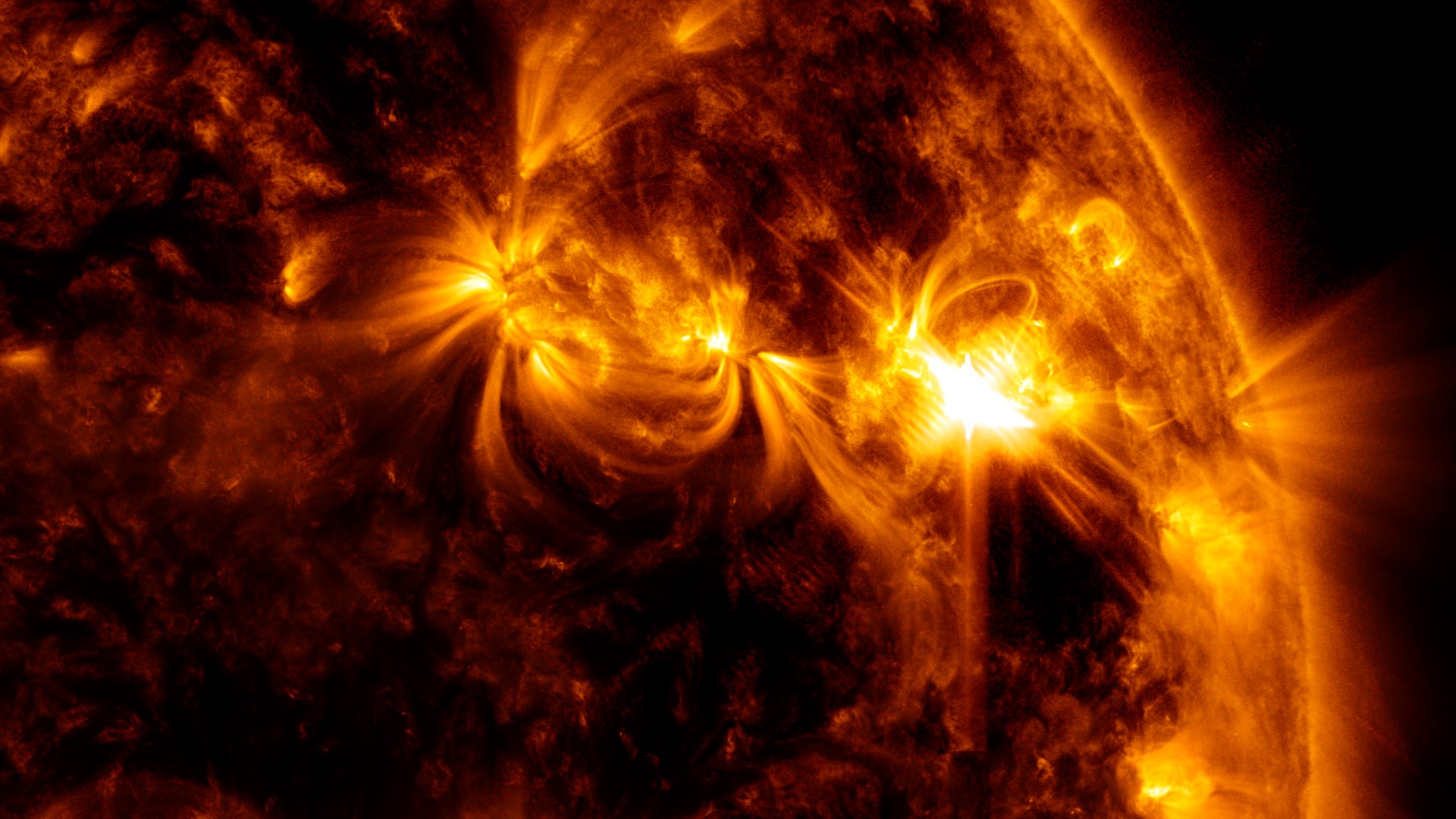Significant Solar Flare Erupts From Sun on March 30, 2022

An X1.3 class solar flare flashes in center of the Sun on Mar. 30, 2022. This image was captured by NASA's Solar Dynamics Observatory and shows a blend of light from the 171 and 131 angstrom wavelengths.
Credit: NASA/GSFC/SDO
The Sun emitted a significant solar flare on March 30, 2022, peaking at 1:35 p.m. EST. NASA’s Solar Dynamics Observatory, which watches the Sun constantly, captured imagery of the event.
Solar flares are powerful bursts of energy. Flares and solar eruptions can impact radio communications, electric power grids, navigation signals, and pose risks to spacecraft and astronauts.
This flare is classified as an X-Class flare. X-class denotes the most intense flares, while the number provides more information about its strength. An X2 is twice as intense as an X1, an X3 is three times as intense, etc. More info on how flares are classified can be found here.
To see how such space weather may affect Earth, please visit NOAA’s Space Weather Prediction Center https://spaceweather.gov/, the U.S. government’s official source for space weather forecasts, watches, warnings, and alerts. NASA works as a research arm of the nation’s space weather effort. NASA observes the Sun and our space environment constantly with a fleet of spacecraft that study everything from the Sun’s activity to the solar atmosphere, and to the particles and magnetic fields in the space surrounding Earth.
An X1.3 class solar flare flashes in center of the Sun on Mar. 30, 2022. This video was captured by NASA's Solar Dynamics Observatory and shows a blend of light from the 171 and 131 angstrom wavelengths.
Credit: NASA/GSFC/SDO

An X1.3 class solar flare flashes in center of the Sun on Mar. 30, 2022. This animated gif was captured by NASA's Solar Dynamics Observatory and shows a blend of light from the 171 and 131 angstrom wavelengths.
Credit: NASA/GSFC/SDO

An X1.3 class solar flare flashes in center of the Sun on Mar. 30, 2022. This image was captured by NASA's Solar Dynamics Observatory and shows light in the 131 angstrom wavelength.
Credit: NASA/GSFC/SDO
An X1.3 class solar flare flashes in center of the Sun on Mar. 30, 2022. This video was captured by NASA's Solar Dynamics Observatory and shows light in the 131 angstrom wavelength.
Credit: NASA/GSFC/SDO
An X1.3 class solar flare flashes in center of the Sun on Mar. 30, 2022. This video was captured by NASA's Solar Dynamics Observatory and shows light in the 171 angstrom wavelength.
Credit: NASA/GSFC/SDO
For More Information
Credits
Please give credit for this item to:
NASA's Goddard Space Flight Center. However, individual items should be credited as indicated above.
-
Writer
- Miles S. Hatfield (Telophase)
-
Visualizer
- Tom Bridgman (Global Science and Technology, Inc.)
-
Producer
- Scott Wiessinger (KBR Wyle Services, LLC)
Release date
This page was originally published on Wednesday, March 30, 2022.
This page was last updated on Wednesday, May 3, 2023 at 11:44 AM EDT.
